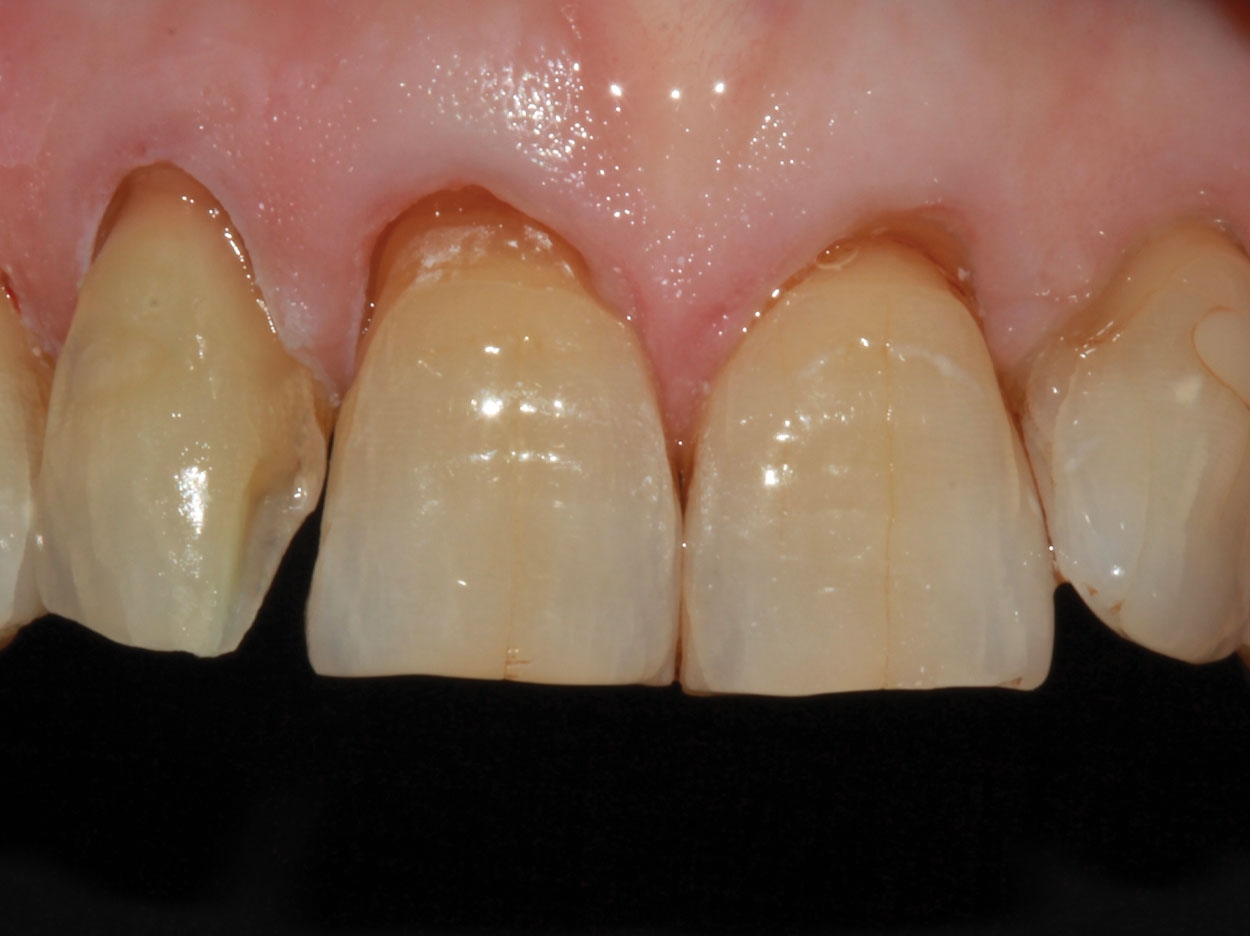
In the direct restoration of natural teeth, shade matching is a critical component to a successful outcome. To accomplish this, manufacturers historically have used color additive techniques to create materials with a variety of shades and translucencies. This requires a busy dental practice to inventory more materials, learn a subjective process of shade selection, and take the time to do it prior to beginning the procedure.
To address this, Tokuyama Dental America has developed a revolutionary resin-based composite brand, OMNICHROMA, that is capable of matching all 16 classical VITA shades with just one shade of composite using Tokuyama Dental America’s Smart Chromatic Technology.
Rather than adding chemical dyes to the composite to create color, OMNICHROMA generates a natural structural color by utilizing specifically designed filler particles of uniform size that combine with the natural properties of light (ie diffraction, refraction, interference, and scattering) that draw upon the reflected light and color of the surrounding tooth to create the final shade.
When dispensed, OMNICHROMA is opaque white, which aids in visibility and placement of the material. Once the composite is light cured, the magic of the material takes effect as it becomes semi-translucent and begins to pick up the surrounding tooth colors, utilizing the natural properties of light to create a shade that blends in.
The extraordinary properties of OMNICHROMA are demonstrated in 2 cases. First, in Figure 1, you see the patient who wanted an aesthetic improvement of his maxillary anterior teeth that exhibited areas or erosion, wear, poor tooth position, and poor contour. The direct restorative sequence included the following:
- Each tooth was recontoured to minimize prominent rotations and significant proportional discrepancies.
- All areas to be bonded were abraded with a fine diamond, and long reverse bevels were created to allow blending of the material into the enamel contour of the tooth. These modifications are visible in Figure 2.
- Next, 35% Ultra-Etch phosphoric acid (Ultradent Products) was utilized to etch all enamel areas for 20 seconds.
- Then we applied Tokuyama Universal Bond (Tokuyama Dental America) to all enamel and dentin areas. It is a 2-component, self-cured adhesive system that does not require light curing.
- As we placed OMNICHROMA (Tokuyama Dental America), a thin layer of flowable composite was utilized to enhance the composite-resin-to-tooth interface. In this case, we used Estelite Bulk Fill Flow composite, shade A1 (Tokuyama Dental America).
- For finishing and polishing, we began with fine diamonds, progressed to Mylar discs (Brasseler USA) and finished with Diacomp polishers (Brasseler USA).
- As you can see in Figure 3, we were able to improve a number of aesthetic issues in one appointment with limited recontouring and utilizing the unique properties of OMNICHROMA to restore the deficient and defective sites on these anterior 6 teeth.
In our second case, a maxillary second premolar had moderate recurrent decay in the distal interproximal box and small decay in the mesial contact area. As you can see in Figure 4, the existing restoration was already large. Our direct restorative sequence included the following:
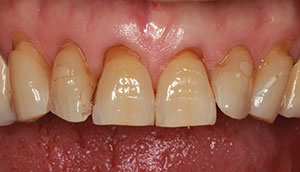 |
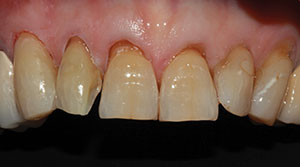 |
| Figure 1. Pretreatment image of the maxillary anterior teeth with erosion, rotations, and staining. |
Figure 2. The maxillary anterior teeth after recontouring and tooth modifications. |
 |
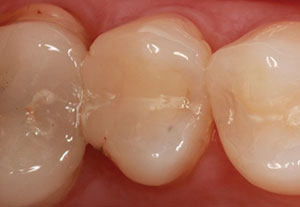 |
| Figure 3. The maxillary anterior teeth after bonding with OMNICHROMA (Tokuyama Dental America). | Figure 4. Pretreatment image of a maxillary second premolar with an existing composite restoration. |
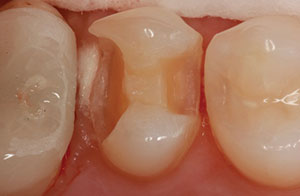 |
 |
| Figure 5. Tooth preparation after decay removal. | Figure 6. Final restoration with OMNICHROMA. |
- Figure 5 reveals a large MOD tooth preparation with wide interproximal boxes after decay removal.
- We then scrubbed the tooth preparation with Consepsis Scrub (Ultradent Products).
- Selectively etched, the peripheral enamel for 20 seconds and rinsed.
- Applied Tokuyama Universal Bond (Tokuyama Dental America) to all surfaces and air dried.
- Placed Palodent Sectional Ma-trix System (Dentsply Sirona) and adapted it intimately.
- Applied a layer of Estelite Bulk Fill Flowable Composite shade A1 (Tokuyama Dental America) as a liner and adapted it to all dentin surfaces, then light cured for 20 seconds.
- Followed immediately by the placement of OMNICHROMA (Tokuyama Dental America). Sculpted OMNICHROMA to an initial contour and light cured for 20 seconds.
- Removed the Palodent Sectional Matrix Bands (Dentsply Sirona) and light cured from the buccal and lingual for another 20 seconds.
- For finishing and polishing, we began with fine diamonds, progressed to Mylar discs, and finished with Diacomp polishers. As you can see in Figure 6, even with a very large tooth preparation, the extraordinary properties of OMNICHROMA produced great results.
For more information, call Tokuyama Dental America at (877) 378-3548 or visit tokuyama-us.com.
Dr. McDonald is in private practice in Plano, Texas. He is a visiting faculty member at the Pankey Institute and Spear Education. He has given educational presentations for dentists and dental assistants at national and regional dental meetings across the United States on clinical subjects as well as leadership and team building.


